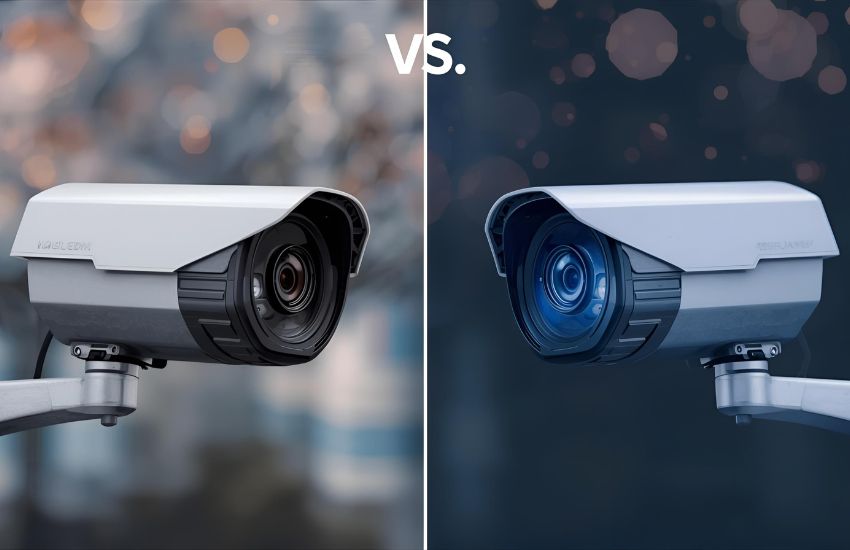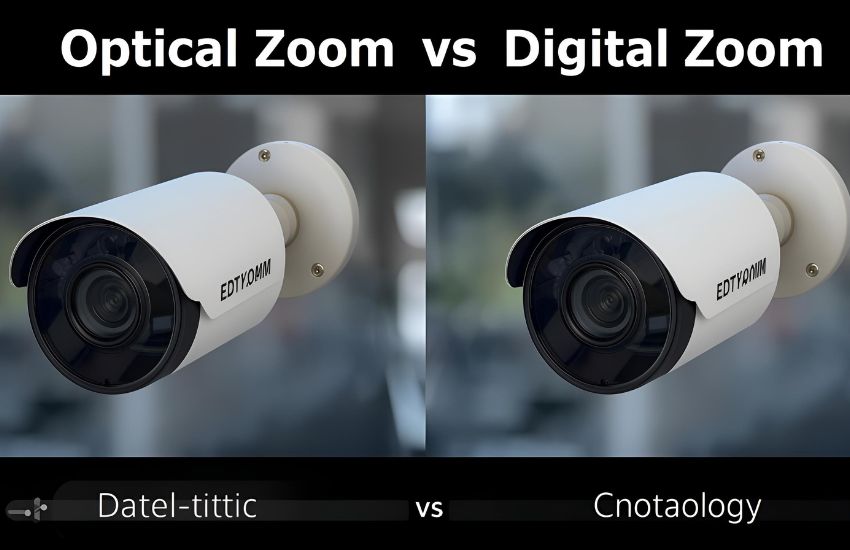The ability to zoom effectively can be the difference between capturing critical details and missing key information in surveillance footage. When you rely on a security camera, understanding how zoom functions — particularly the distinctions between optical zoom and digital zoom — is essential. Optical zoom uses the camera’s lens to physically adjust focal length, allowing you to enlarge an image with clarity and minimal loss of quality. In contrast, digital zoom enlarges the image by cropping and interpolating pixels, which can reduce sharpness and detail.
Optical zoom in security cameras uses the lens to magnify images without losing quality, providing clear, detailed views. Digital zoom, unlike optical zoom, enlarges the image digitally, often reducing clarity. Cameras typically rely on optical zoom for precise surveillance, while digital zoom can make distant objects appear closer but with lower resolution and potential pixelation.
In this blog, you will discover how optical and digital zoom work, the impact of lens and pixel technology on image quality, and why motorized zoom features might enhance your security camera setup. Understanding these elements will empower you to make informed decisions for effective surveillance.
How Zoom Works: Exploring the Difference Between Optical Zoom and Digital Zoom in Surveillance

Understanding how zoom works in a security camera system is crucial when deciding between optical zoom and digital zoom. The debate of optical zoom vs digital zoom often centers on image clarity and quality as you zoom in on specific areas. Optical zoom security cameras use a camera lens that physically adjusts the focal length, allowing you to enlarge images without sacrificing pixel detail. This means that cameras with optical zoom deliver clearer and more precise images, making them ideal for surveillance applications where identifying fine details is critical. Optical zoom is achieved through the movement of lens elements, sometimes motorized for smooth adjustment, which provides flexibility in zoom level increases without degrading image quality.
On the other hand, digital zoom works by cropping and enlarging the image digitally, which can result in pixelation and a loss of detail. When you use digital zoom, the camera system essentially magnifies pixels rather than optically zooming through the lens, which may limit the effectiveness of surveillance cameras in critical security requirements. This is why optical zoom is often considered superior to digital zoom, especially in professional security camera systems that demand high-quality images.
The difference between optical zoom and digital zoom lies in how zoom functionality is achieved: optical zoom relies on physical camera optics, while digital zoom depends on software processing. While digital zoom offers a cost-effective way to magnify images, the quality of the digital zoom is generally lower than that of optical zoom cameras. For those seeking the best zoom capabilities, security cameras with optical zoom lenses—and especially those equipped with motorized optical zoom—provide enhanced control, clarity, and reliability in zooming, making them the preferred choice in many surveillance environments. Understanding this optical versus digital zoom distinction will help you select the type of zoom that best meets your security camera system needs.
See more about…Construction Site Security Camera Person Detection Alarm
Understanding the Lens, Pixel Clarity, and Type of Zoom: A Deep Dive into Optical vs Digital Zoom in Security Camera Systems

When you consider zoom in security cameras, the lens plays a pivotal role. Optical zoom allows the camera lens to magnify the image by physically adjusting the focal length inside the camera. This mechanical adjustment means optical zoom offers greater clarity and sharpness compared to digital alternatives. By using the lens to magnify the image, optical zoom helps maintain pixel integrity, even at higher zoom levels, providing you with crisp and detailed footage essential for effective surveillance.
Pixel Clarity: Why Optical Zoom Is Superior to Digital Zoom
Digital zoom can struggle to maintain image quality because it enlarges the footage by cropping and interpolating pixels rather than adjusting the lens. This often results in a blurry or pixelated image when you zoom in digitally. Optical zoom provides a better option if your priority is clear and precise visuals, especially when identifying small details like faces or license plates. Because optical zoom is superior to digital zoom in terms of preserving pixel clarity, it remains the preferred choice for professional surveillance systems.
Choosing the Right Type of Zoom for Your Security Camera System
Understanding what zoom means in terms of surveillance can help you make informed decisions. Optical zoom needs a quality varifocal security lens to deliver reliable performance, especially if you require variable zoom levels without losing detail. However, some situations might benefit from digital zoom, particularly when cost or camera design limits optical capabilities. Still, whenever possible, you should consider optical zoom for your security cameras, as it also offers smoother zoom functionality—often enhanced by motorized zoom features—to adapt quickly to changing security requirements. Balancing these factors ensures you select the zoom type that best fits your surveillance goals.
See more about…Security Camera AI Person Detection
Conclusion
In conclusion, understanding how optical zoom works is essential when selecting the right security camera for your surveillance needs. Optical zoom also offers significant advantages over digital zoom by using the camera’s lens to magnify the image without sacrificing clarity. Cameras typically equipped with optical zoom provide superior image quality, especially at higher zoom levels, making them ideal for detailed monitoring. Unlike optical zoom, digital zoom can make images appear pixelated and lose important detail as it simply enlarges the existing pixels. By choosing cameras with reliable optical zoom capabilities, you ensure clearer, more effective surveillance that meets your security requirements.
See more about…Wireless Home Security Camera with IR
Frequently Asked Questions (Optical Zoom vs Digital Zoom: Understanding Zoom in Security Camera Technology)
What is the difference between optical zoom and digital zoom in cameras?
Optical zoom uses the camera’s physical lens movement to magnify the image, maintaining full resolution and image quality. Digital zoom, however, enlarges the image by cropping and digitally enhancing pixels, which reduces clarity and detail. Optical zoom provides true magnification, while digital zoom only simulates it, often resulting in lower-quality images.
What is the difference between optical zoom and digital zoom on Iphone?
Optical zoom on an iPhone uses the camera’s lenses to magnify the image without losing quality, providing true zoom by adjusting focal length. Digital zoom, however, enlarges the image digitally by cropping and enhancing pixels, which can reduce sharpness and detail. Optical zoom delivers clearer, more natural results than digital zoom.
What is optical zoom in CCTV?
Optical zoom in CCTV cameras uses the camera’s lens to magnify the image by physically adjusting the focal length. This maintains full image quality and clarity, even when zooming in on distant objects. Unlike digital zoom, it doesn’t pixelate or degrade the image, making it ideal for detailed surveillance and long-distance monitoring.
Is 10x optical zoom better than digital zoom?
Yes, 10x optical zoom is better than digital zoom because it uses the camera’s lens to magnify the image without losing quality. Optical zoom maintains sharpness and detail, while digital zoom simply enlarges pixels, resulting in a blurry or grainy image. Therefore, optical zoom provides clearer and higher-quality close-up shots.
